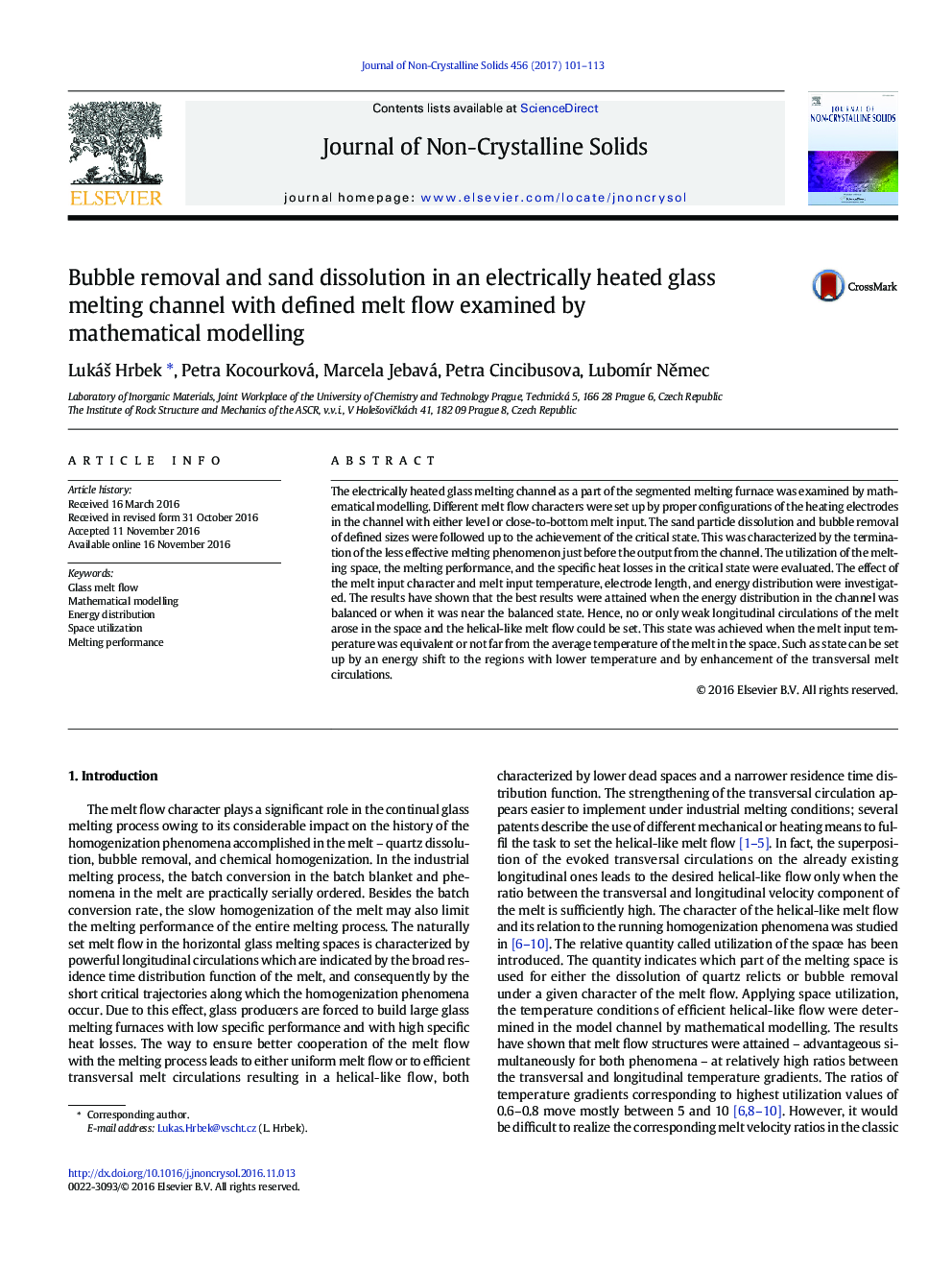| Article ID | Journal | Published Year | Pages | File Type |
|---|---|---|---|---|
| 5441388 | Journal of Non-Crystalline Solids | 2017 | 13 Pages |
Abstract
The electrically heated glass melting channel as a part of the segmented melting furnace was examined by mathematical modelling. Different melt flow characters were set up by proper configurations of the heating electrodes in the channel with either level or close-to-bottom melt input. The sand particle dissolution and bubble removal of defined sizes were followed up to the achievement of the critical state. This was characterized by the termination of the less effective melting phenomenon just before the output from the channel. The utilization of the melting space, the melting performance, and the specific heat losses in the critical state were evaluated. The effect of the melt input character and melt input temperature, electrode length, and energy distribution were investigated. The results have shown that the best results were attained when the energy distribution in the channel was balanced or when it was near the balanced state. Hence, no or only weak longitudinal circulations of the melt arose in the space and the helical-like melt flow could be set. This state was achieved when the melt input temperature was equivalent or not far from the average temperature of the melt in the space. Such as state can be set up by an energy shift to the regions with lower temperature and by enhancement of the transversal melt circulations.
Related Topics
Physical Sciences and Engineering
Materials Science
Ceramics and Composites
Authors
LukáÅ¡ Hrbek, Petra Kocourková, Marcela Jebavá, Petra Cincibusova, LubomÃr NÄmec,
